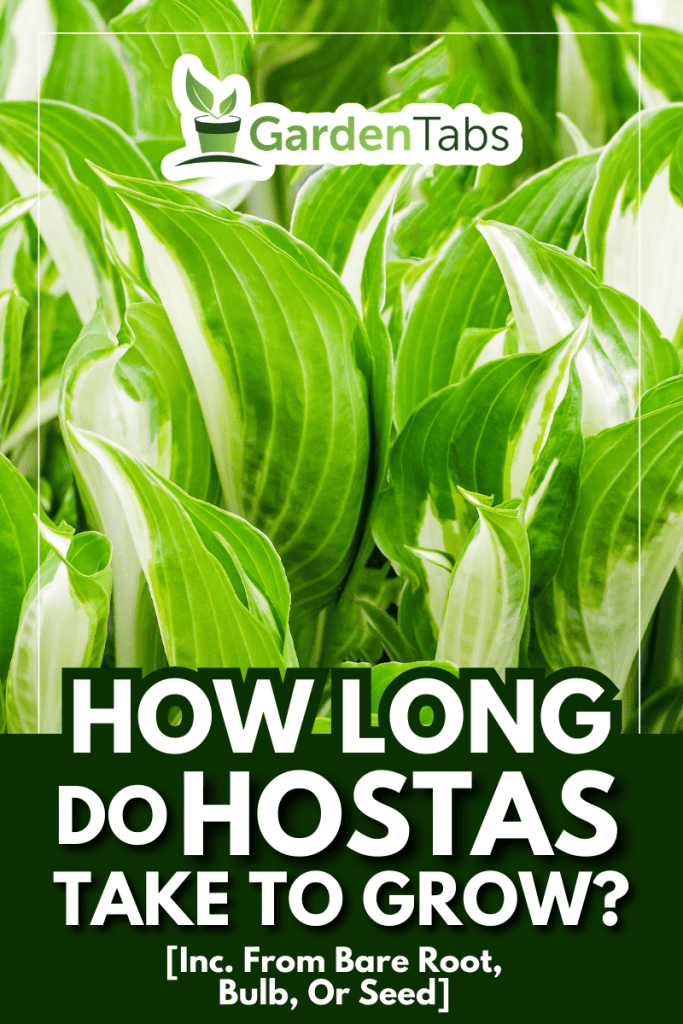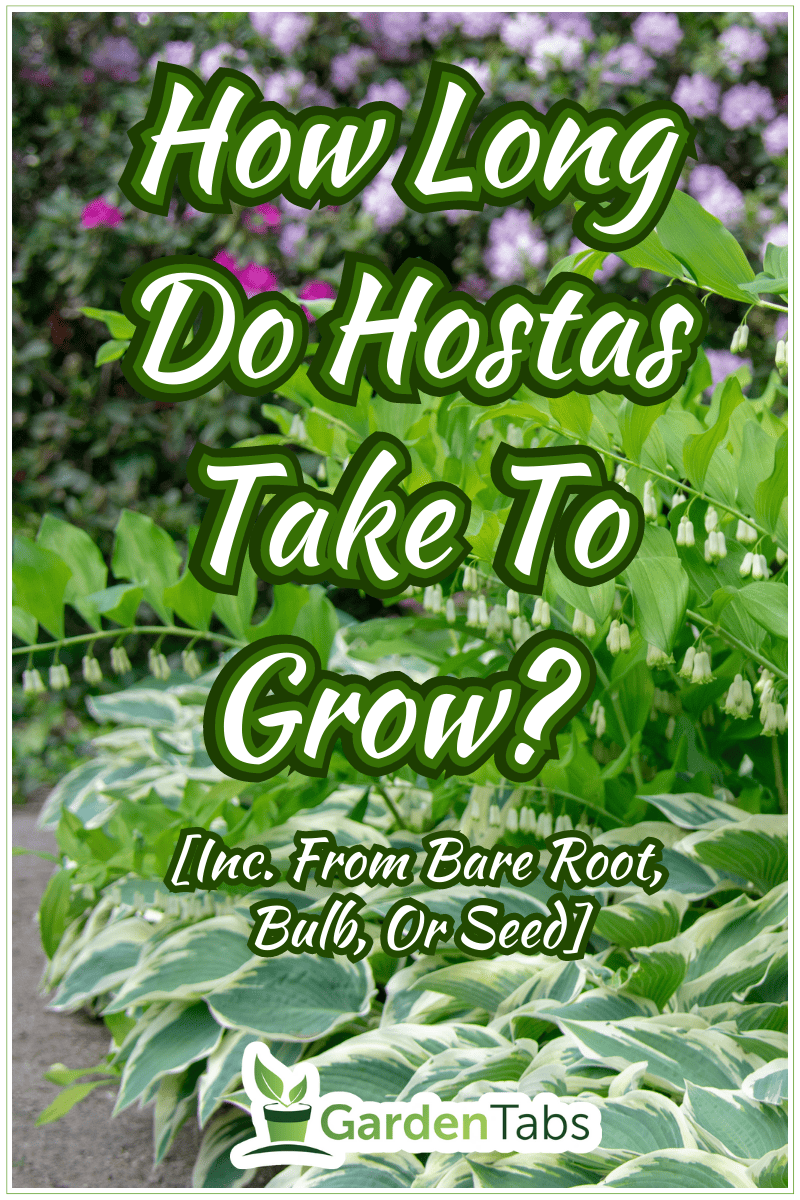Hostas are shade-loving perennials that are extremely easy to care for. This makes them a popular choice amongst beginner and expert gardeners alike. We know hostas are easy to grow, but how long do they take to grow? Great question! We have researched the answer for you on how long hostas take to grow.
How long hostas take to grow depends on the type and size of hosta you have. There are three types—slow-, moderate-, and fast-growing groups. That being said, these plants can take anywhere from three to seven years to fully mature depending on the group they are in.
This might lead to other questions, like how do I grow hostas? Or, what kind of soil do hostas like? And even, can I plant hostas in the sun? Keep reading for the answers to these questions and more.
![Green bush Hosta. Hosta leaves. Beautiful Hosta leaves background. Hosta - an ornamental plant for landscaping park and garden design. - How Long Do Hostas Take To Grow? [Inc. From Bare Root, Bulb, Or Seed]](https://gardentabs.com/wp-content/uploads/2023/05/Green-bush-Hosta.-Hosta-leaves.-Beautiful-Hosta-leaves-background.-Hosta-an-ornamental-plant-for-landscaping-park-and-garden-design.-How-Long-Do-Hostas-Take-To-Grow-Inc.-From-Bare-Root-Bulb-Or-.png)
How Long Do Hostas Take To Grow?
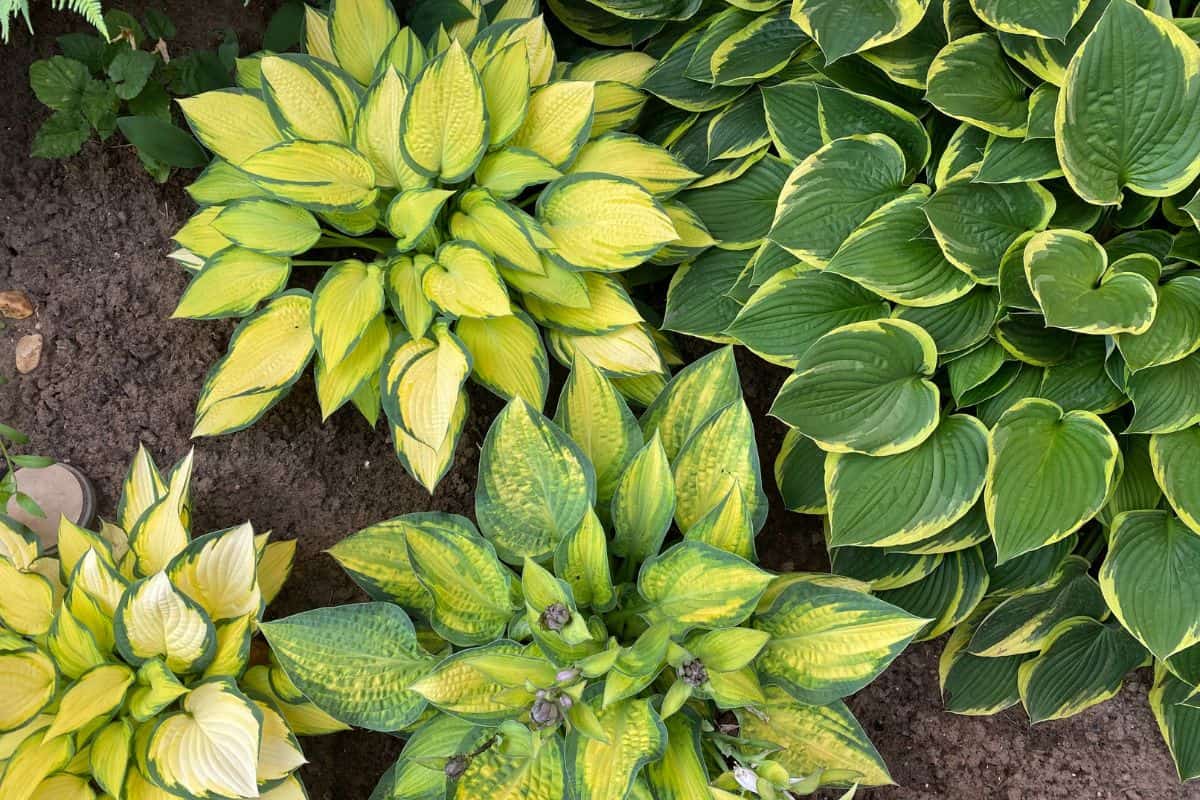
Being hardy in USDA Hardiness Zones 3 through 9 makes hostas well loved all over the United States! However, all hostas are not created equally. Some hostas grow slowly and others faster, taking anywhere from three to seven years.
Let's further review the three growing groups and which hosta variety falls into each category.
Slow
The slow-growing variety takes the longest to mature at five to seven years. This might seem like a long time! Nonetheless, you can still enjoy your hostas during all phases of growing.
Normally, the slow-growing hostas are miniature or smaller in size. Some examples of slow-growing hostas are dancing stars, rhino hide, and cherry tomato.
Moderate
There are over 2,000 different varieties of hostas! Most hostas fall into the moderate-growing group. Anywhere from four to six years is average for this variety.
Fast
Fast-growing hostas usually mature in three to five years. Vulcan, royal wedding, and island breeze are all examples of fast-growing hostas. Vulcan, being a vigorous grower with a white-colored center, is a popular option underneath trees and along pathways.
How Do I Care For Hostas?
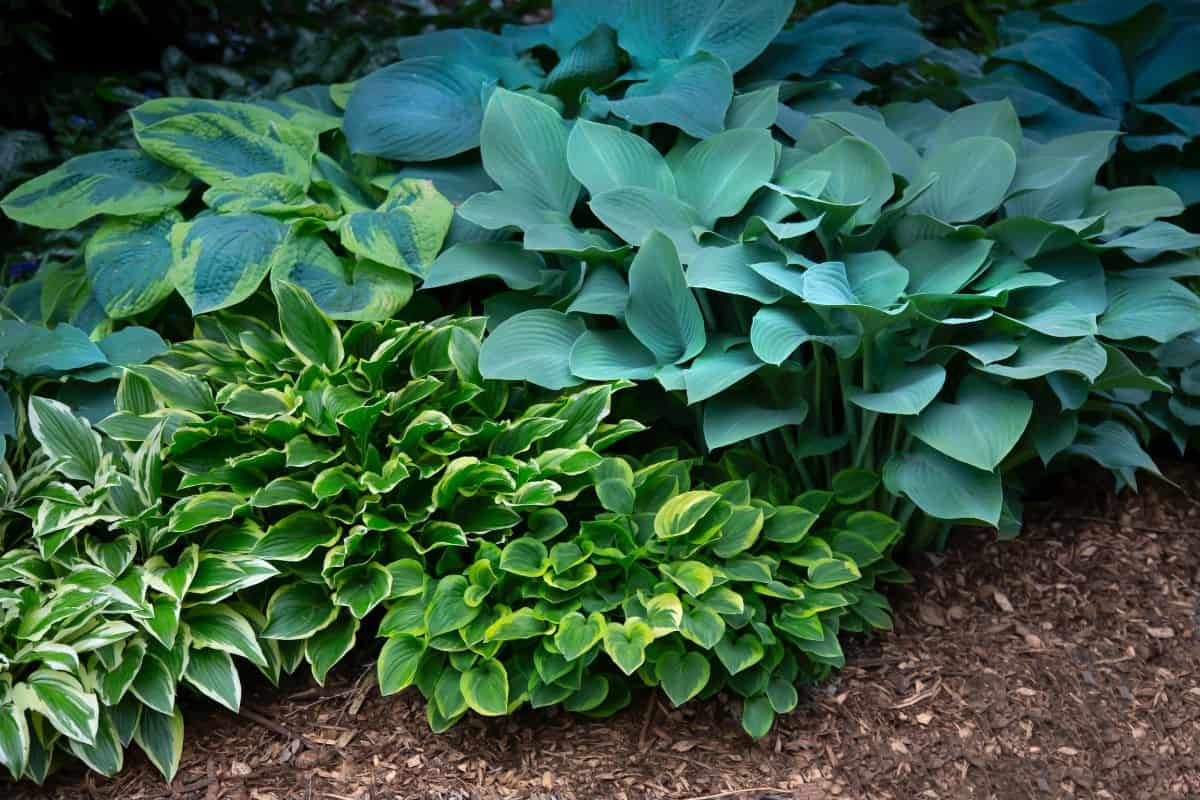
Hostas require TLC just like any other plant. If you get the proper soil, sun, and water requirements, you will have yourself a healthy hosta! Let's discuss the preferred growing conditions of hostas.
Water
Hostas require an average of about one inch of water per week. It is important to deeply water up until the fall when the weather starts changing. They can suffer from dry rot if they don't receive enough water during the summer months.
Sun
Hostas love the shade! Too much sun and they will wither and die. They can handle some sun in the early morning but prefer shade the rest of the afternoon. Underneath a tree or in a shady garden is ideal.
Soil
Hostas like fertile soil full of organic compost. Avoid clay soil, as it will not do well. Pro tip—use old coffee grounds to give your soil a boost!
How Do I Grow Hostas From Bulb And Seed?
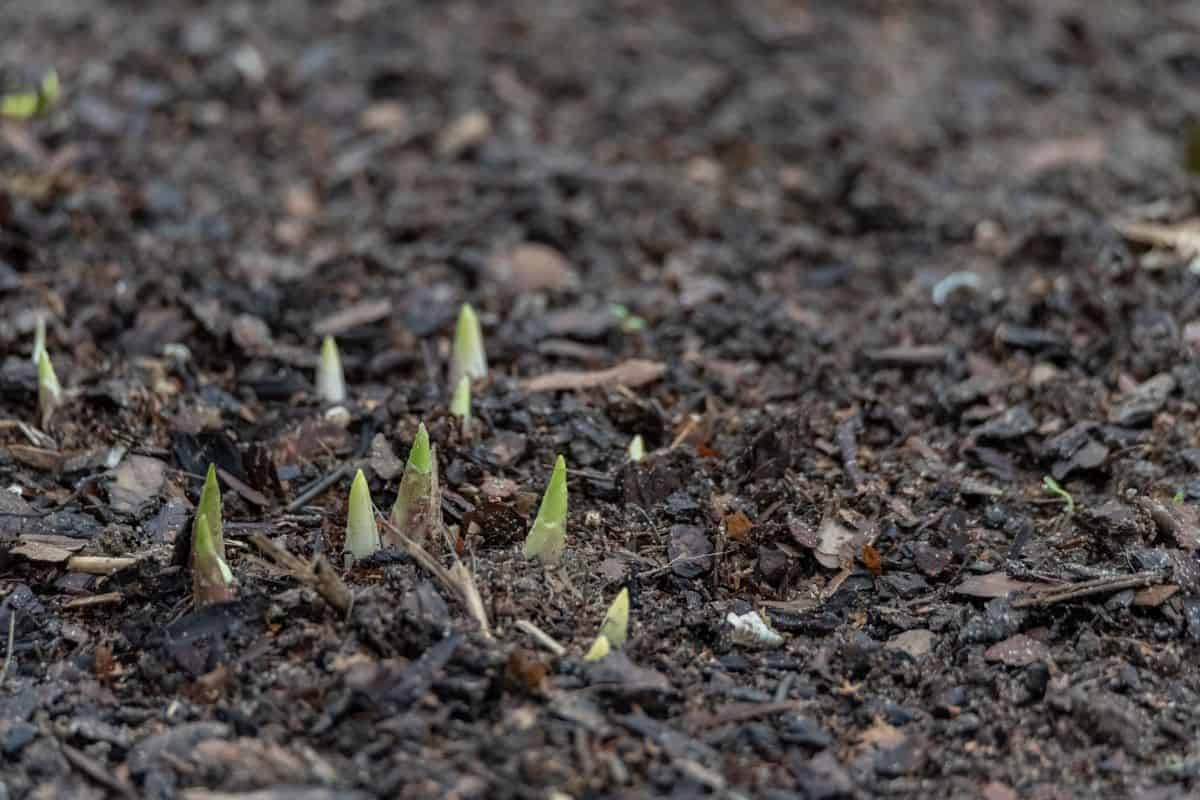
You can grow hostas in many different ways! Root, bulb, and seed are all ways that you can grow your hostas. There are some tips and tricks for each method of growing.
Bulb
Hosta stems take about four to 10 weeks to grow as long as the temperatures are below 35 to 40 degrees. You can plant your hosta root directly into the ground an inch or two deep. Give the baby plant plenty of water until the next season when it's established.


Click here to see these hosta bulbs on Amazon.
Seed
Growing hostas from seeds is easy! Start by scattering your seeds in a container with a moist potting mix. Place them near a window that receives filtered light. Once you see tiny sprouts of green, allow them to grow a little longer until transplanting them.
How Do I Fertilize Hostas?
Slow-release fertilizer is recommended for new hosta plants. For more mature hostas, use a 10-10-10 fertilizer. Don't overdo it though! Hostas can have too much nitrogen which can kill the plant.


Click here to see this 10-10-10 fertilizer on Amazon.
How Long Do Hostas Live?
Hostas have a long lifespan. If well cared for, they can live up to 30 years! A tough year of extreme weather can take out your hostas, so be sure to provide extra care during this time.
When Should I Plant Hostas?
The best time to plant hostas is in early spring when the ground is starting to thaw. Hostas prefer cooler weather and do quite well when planted. Just make sure all chances of frost have passed. Check your local weather for guidance.
What Pests And Diseases Are Hostas Susceptible To?
Although they are hardy plants, there are a couple of diseases and pests that you should watch out for.
Anthracnose
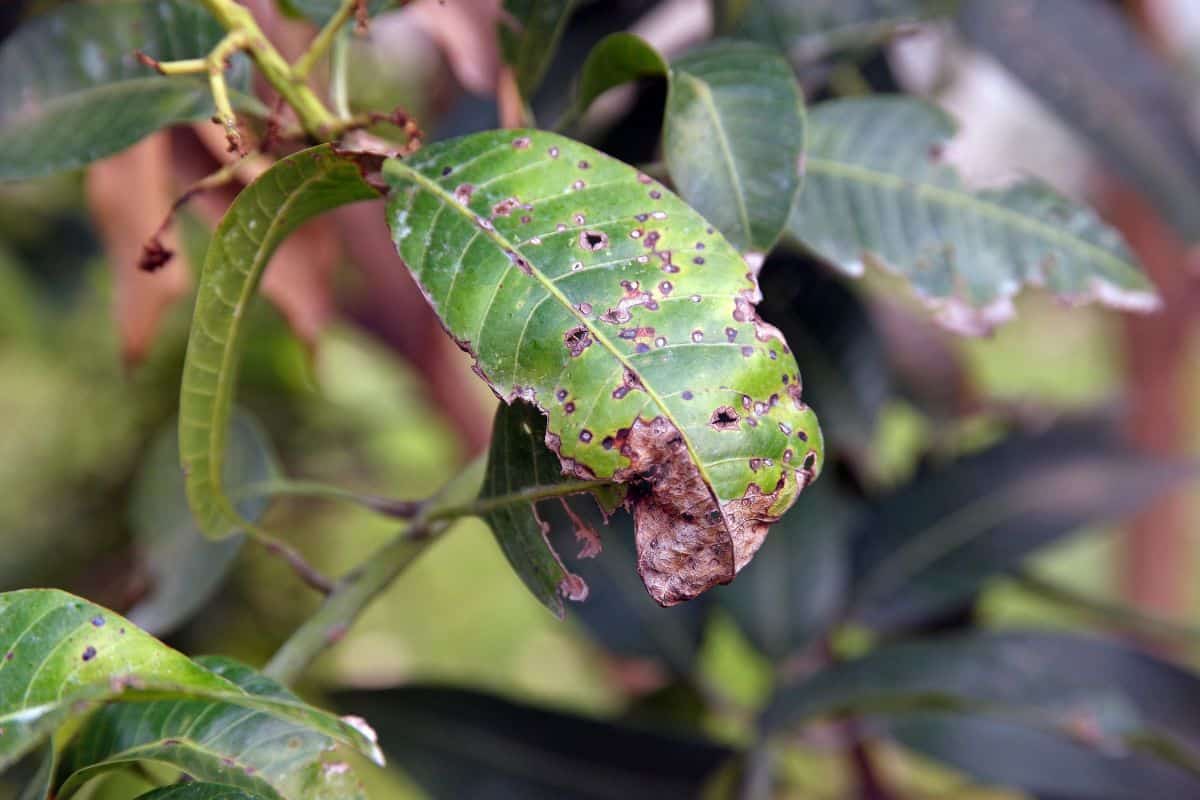
Anthracnose is a fungus-related disease. If left untreated, it can easily spread. The good news is that it is easy to remedy! Some copper fungicides will do the trick. Repeat weekly until all signs of fungus are gone.
Slugs
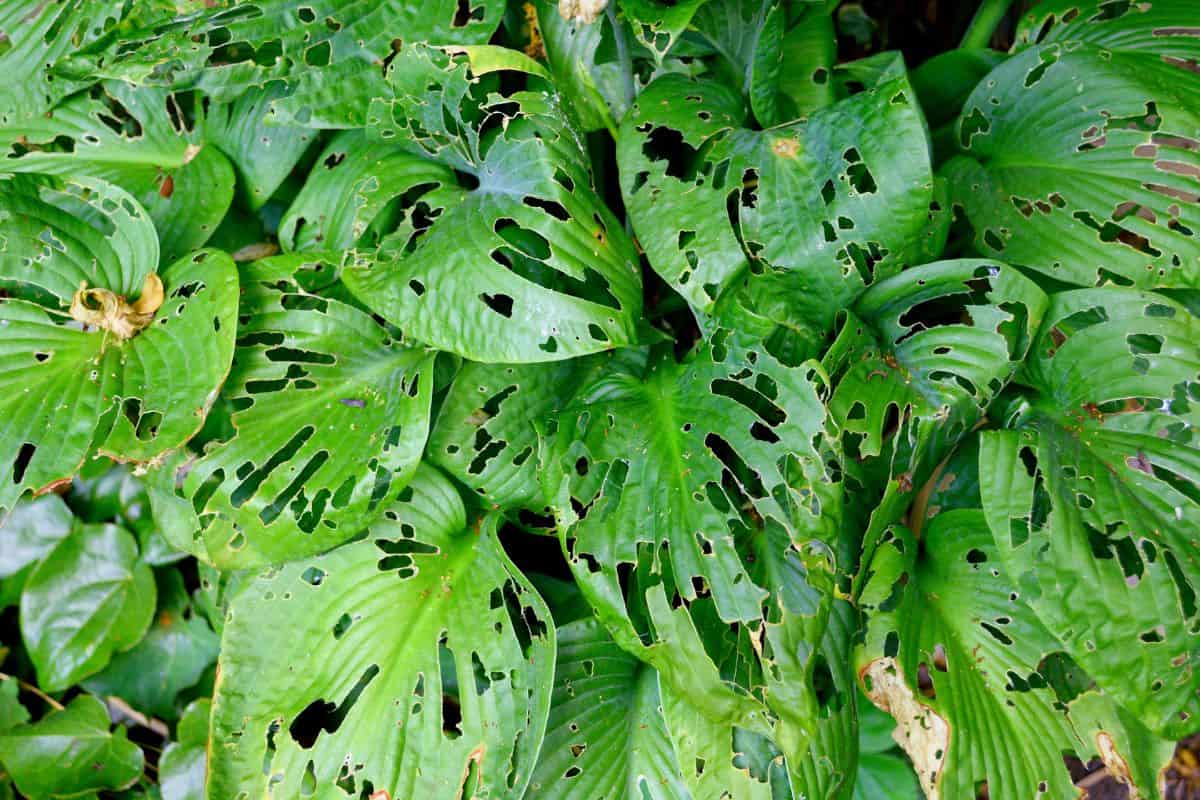
Slugs chew unsightly holes in your hosta leaves. This is very common, but a good way to kill them is to use an ammonia mixture. Mix a 10:1 ratio of water and ammonia and spray directly on the leaves. Spray from the top of the plant to the stems. Slugs are out in the evenings, so it's best to do it when the sun sets.
How Do I Divide Hostas?

A great way to grow your hosta garden is to divide them. Not only is it simple to divide your hostas, but it's also free! Here are some easy steps to divide your hostas:
Step 1
Wait until the spring to divide your hostas. Gently dig around your hosta, and tug until the plant is loose. Lift it out of the hole, and set it down carefully so as not to disturb the leaves.
Step 2
You can use your hands to divide the bulbs or sheers if your hands aren't strong enough. Once divided, set aside the extra bulbs for planting.
Step 3
Replant your original hosta and water thoroughly. Add in some coffee grounds as a natural fertilizer to ensure your plant re-establishes without issues.
Step 4
To plant the new bulb, dig a hole big enough to fit the bulb. Cover with a mixture of soil and compost and water deeply.
Which Hostas Can Grow In The Sun?
Generally speaking, hostas are full-shade plants. But contrary to popular belief, some hostas can thrive in partial sun. Hostas that have yellow leaves do better in sun than green-leafed hostas. Some names to remember for sunny hostas are August moon, rising sun, sun power, and gold regal.
Do I Need To Prune Hostas?
No, you do not have to prune hostas. Although, some gardeners prune the flower stalks when they bloom to transfer energy to the leaves for the remainder of the growing season. Or, some prefer to keep the flowers to attract pollinators like bees and butterflies.
Are Hostas Toxic?
Great news! Hostas aren't toxic to humans, dogs, or cats, so you shouldn't have to worry about poisoning your pets or little ones. Keep in mind they are toxic to horses, but people don't normally run into this issue.
Wrapping It Up
![Green bush Hosta. Hosta leaves. Beautiful Hosta leaves background. Hosta - an ornamental plant for landscaping park and garden design. - How Long Do Hostas Take To Grow? [Inc. From Bare Root, Bulb, Or Seed]](https://gardentabs.com/wp-content/uploads/2022/09/Green-bush-Hosta.-Hosta-leaves.-Beautiful-Hosta-leaves-background.-Hosta-an-ornamental-plant-for-landscaping-park-and-garden-design.-How-Long-Do-Hostas-Take-To-Grow-Inc.-From-Bare-Root-Bulb-Or-Seed.png)
We know that hostas can take anywhere from three to seven years to fully mature. This depends on numerous factors like size, species, and variety. It is broken down into three growing groups—fast, moderate, and slow.
We also reviewed basic care tips, how to divide your hosta, and what diseases and pests they are most susceptible to.
Made it to the end? Check out these helpful related articles:
Will Hostas Grow Under Trees? [Inc. Pine, Walnut, Maple, Cedar & More]

